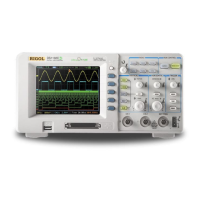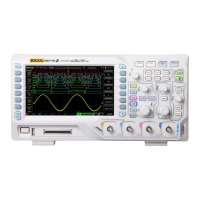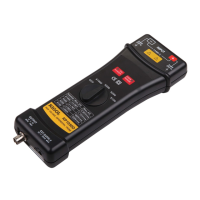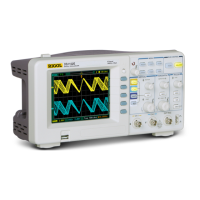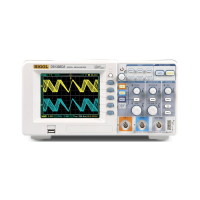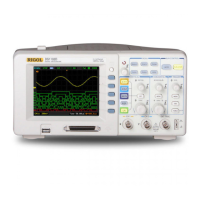
Do you have a question about the Rigol DS1000D series and is the answer not in the manual?
| Memory Depth | 1 Mpts |
|---|---|
| Input Voltage Range | 400V (DC + AC Peak) |
| Timebase Range | 5 ns/div to 50 s/div |
| Trigger Types | Edge, Pulse, Video, Slope, Alternate |
| Input Coupling | DC, AC, GND |
| Sample Rate | 1 GSa/s |
| Channels | 2 |
| Display | 5.7 inch TFT LCD |
| Interfaces | USB Host, USB Device, RS-232 |
| Math Functions | +, -, ×, ÷, FFT |
| Vertical Resolution | 8-bit |
| Input Impedance | 1 MΩ ± 2% || 15 pF ± 3 pF |
| Power Supply | 100-240 VAC, 45-440 Hz |
| Dimensions | 303 mm x 154 mm x 133 mm |
| Bandwidth | 50 MHz, 100 MHz |
Explains the layout and controls of the oscilloscope's front panel for user familiarity.
Details steps to check the oscilloscope for damage and ensure all accessories are present upon receipt.
Guides the user through a quick test to verify the oscilloscope's operational status and basic functionality.
Describes the adjustment procedure to match probe characteristics with the oscilloscope channel for accurate measurements.
Explains how to use the AUTO function for automatic oscilloscope setup for optimal signal display.
Explains the trigger controls, modes, and settings required to stabilize waveform acquisition.
Covers channel settings like coupling, bandwidth limit, probe attenuation, and volts/div adjustments.
Explains various trigger modes (Edge, Pulse, Video, Slope, etc.) and their configurations.
Guides on using automatic measurements for voltage and time parameters, including available measurements.
Provides solutions for common issues and problems encountered while operating the oscilloscope.
